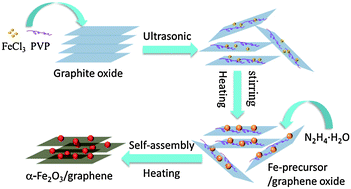α-Fe2O3nanoparticles anchored on graphene with 3D quasi-laminated architecture: in situ wet chemistry synthesis and enhanced electrochemical performance for lithium ion batteries†
Abstract
A novel α-Fe2O3/

* Corresponding authors
a
School of Chemistry and Environment, Beihang University, Beijing 100191, People's Republic of China
E-mail:
guolin@buaa.edu.cn
Fax: +86-10-82338162
Tel: +86-10-82338162
b School of Environmental and Chemical Engineering, Nanchang Hangkong University, Nanchang 330063, People's Republic of China
A novel α-Fe2O3/

 Please wait while we load your content...
Something went wrong. Try again?
Please wait while we load your content...
Something went wrong. Try again?
D. Chen, W. Wei, R. Wang, J. Zhu and L. Guo, New J. Chem., 2012, 36, 1589 DOI: 10.1039/C2NJ40151G
To request permission to reproduce material from this article, please go to the Copyright Clearance Center request page.
If you are an author contributing to an RSC publication, you do not need to request permission provided correct acknowledgement is given.
If you are the author of this article, you do not need to request permission to reproduce figures and diagrams provided correct acknowledgement is given. If you want to reproduce the whole article in a third-party publication (excluding your thesis/dissertation for which permission is not required) please go to the Copyright Clearance Center request page.
Read more about how to correctly acknowledge RSC content.
 Fetching data from CrossRef.
Fetching data from CrossRef.
This may take some time to load.
Loading related content
